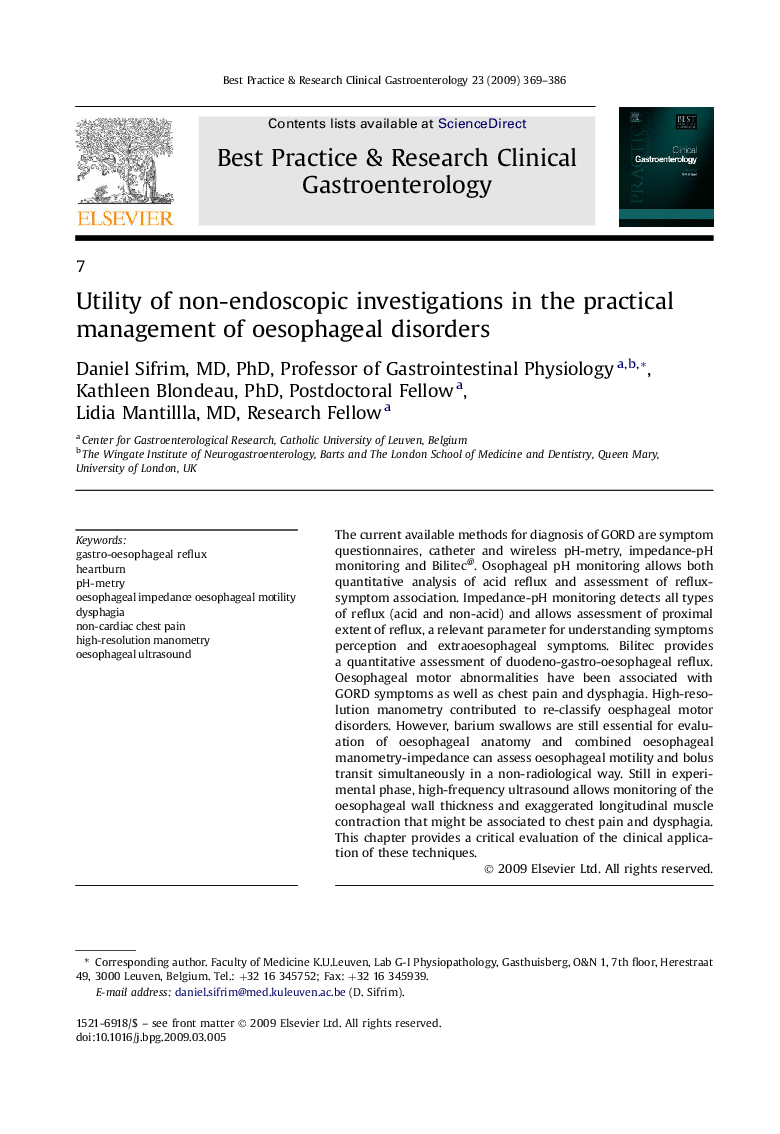| Article ID | Journal | Published Year | Pages | File Type |
|---|---|---|---|---|
| 3254763 | Best Practice & Research Clinical Gastroenterology | 2009 | 18 Pages |
The current available methods for diagnosis of GORD are symptom questionnaires, catheter and wireless pH-metry, impedance-pH monitoring and Bilitec@. Osophageal pH monitoring allows both quantitative analysis of acid reflux and assessment of reflux-symptom association. Impedance-pH monitoring detects all types of reflux (acid and non-acid) and allows assessment of proximal extent of reflux, a relevant parameter for understanding symptoms perception and extraoesophageal symptoms. Bilitec provides a quantitative assessment of duodeno-gastro-oesophageal reflux. Oesophageal motor abnormalities have been associated with GORD symptoms as well as chest pain and dysphagia. High-resolution manometry contributed to re-classify oesphageal motor disorders. However, barium swallows are still essential for evaluation of oesophageal anatomy and combined oesophageal manometry-impedance can assess oesophageal motility and bolus transit simultaneously in a non-radiological way. Still in experimental phase, high-frequency ultrasound allows monitoring of the oesophageal wall thickness and exaggerated longitudinal muscle contraction that might be associated to chest pain and dysphagia. This chapter provides a critical evaluation of the clinical application of these techniques.
